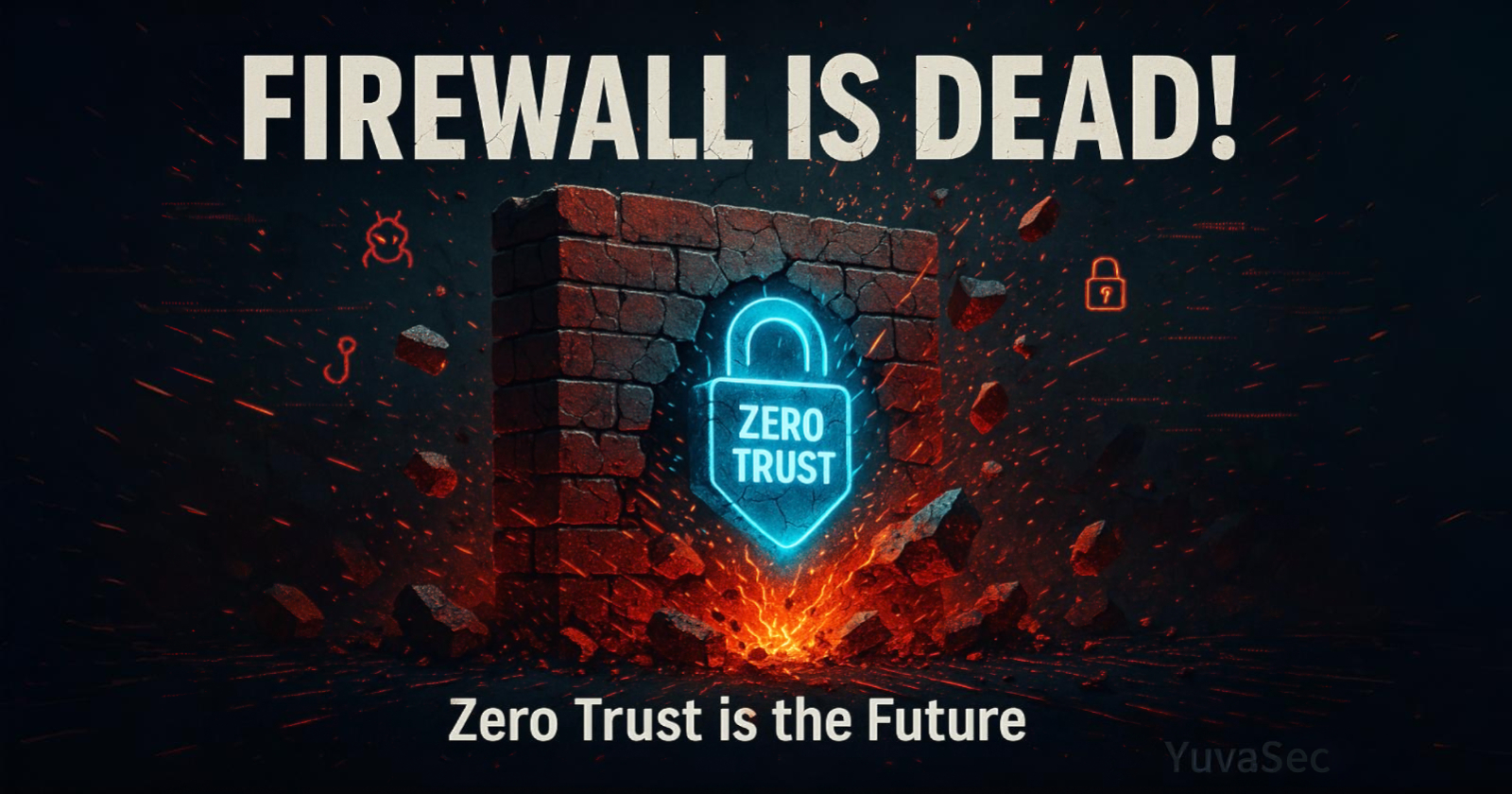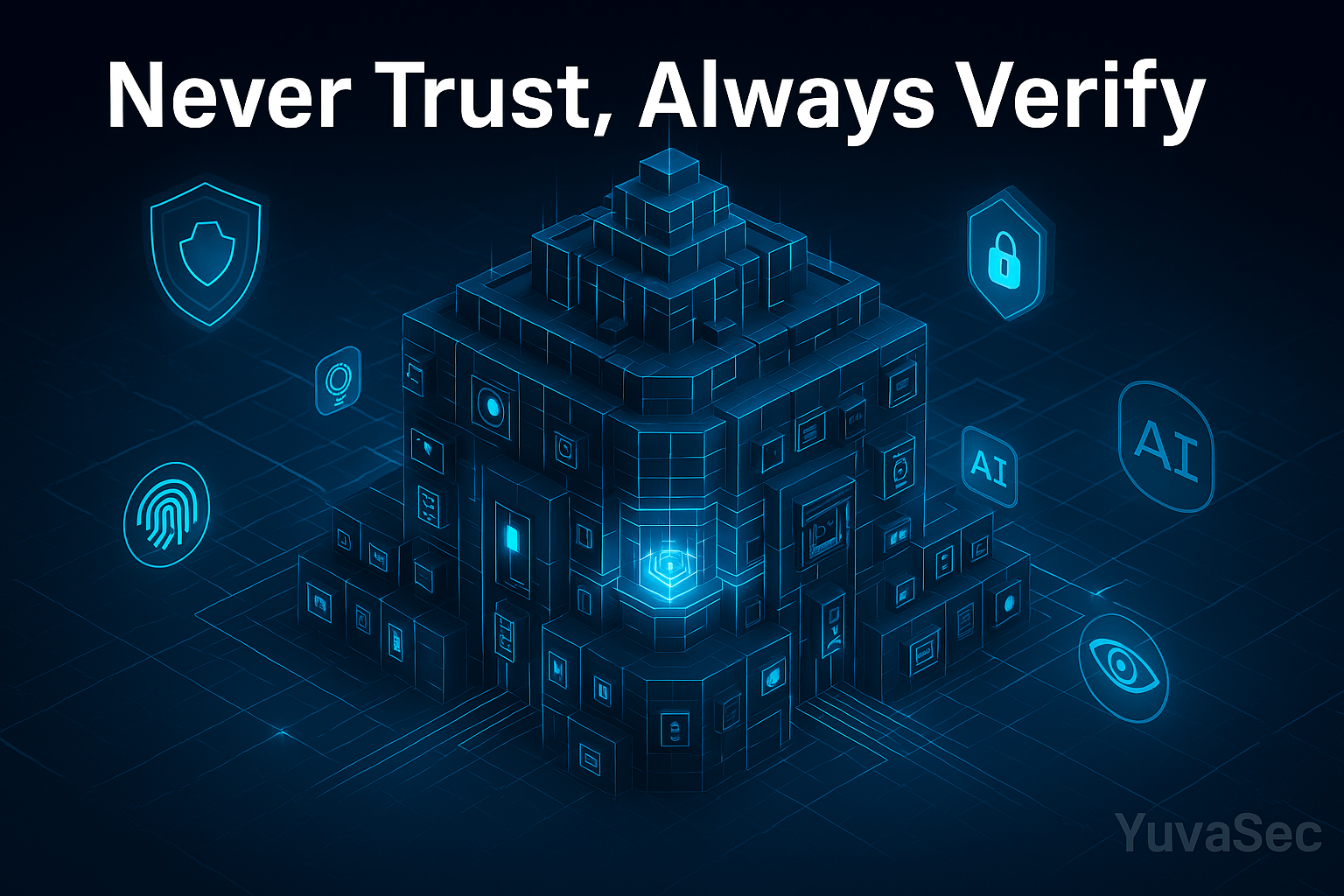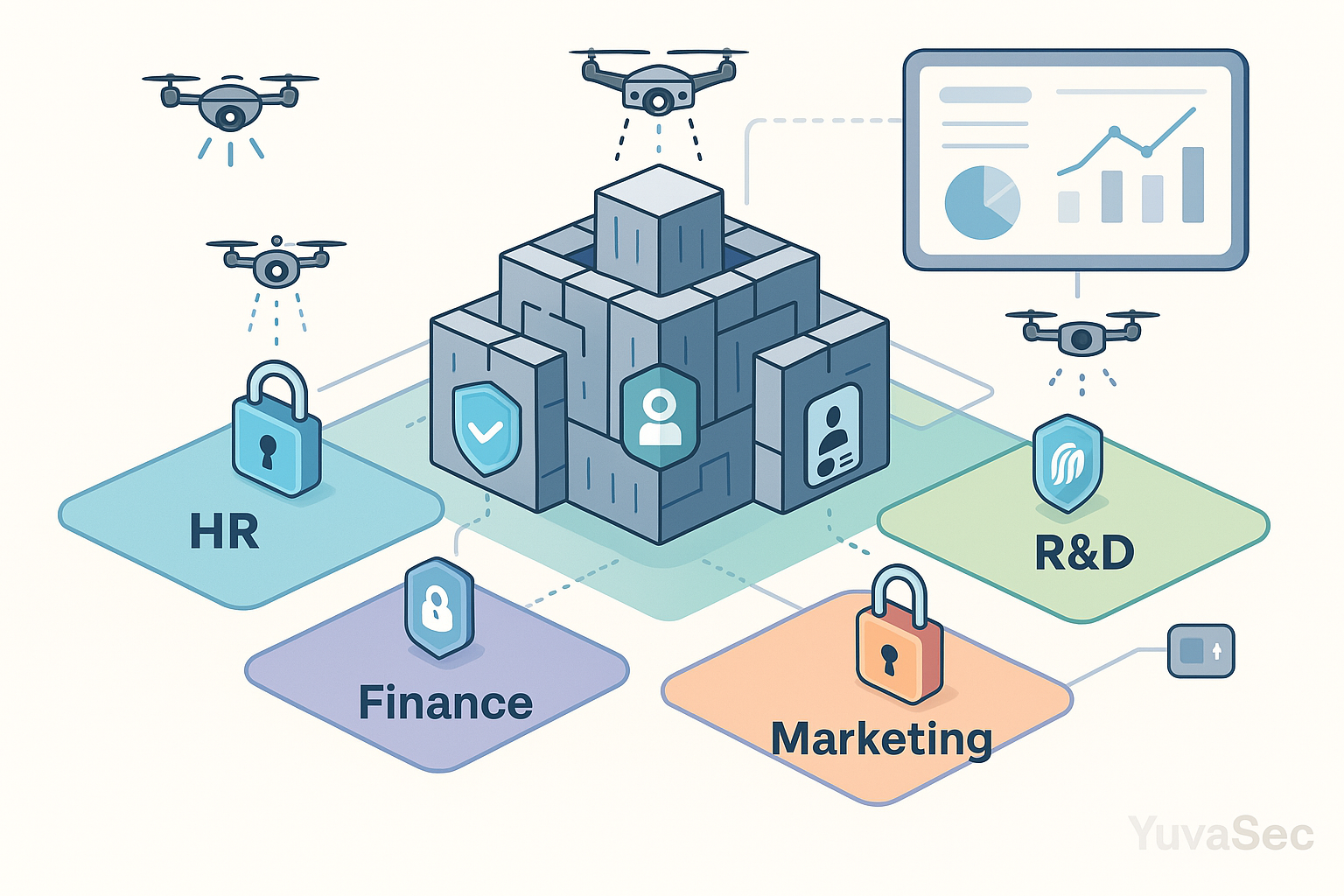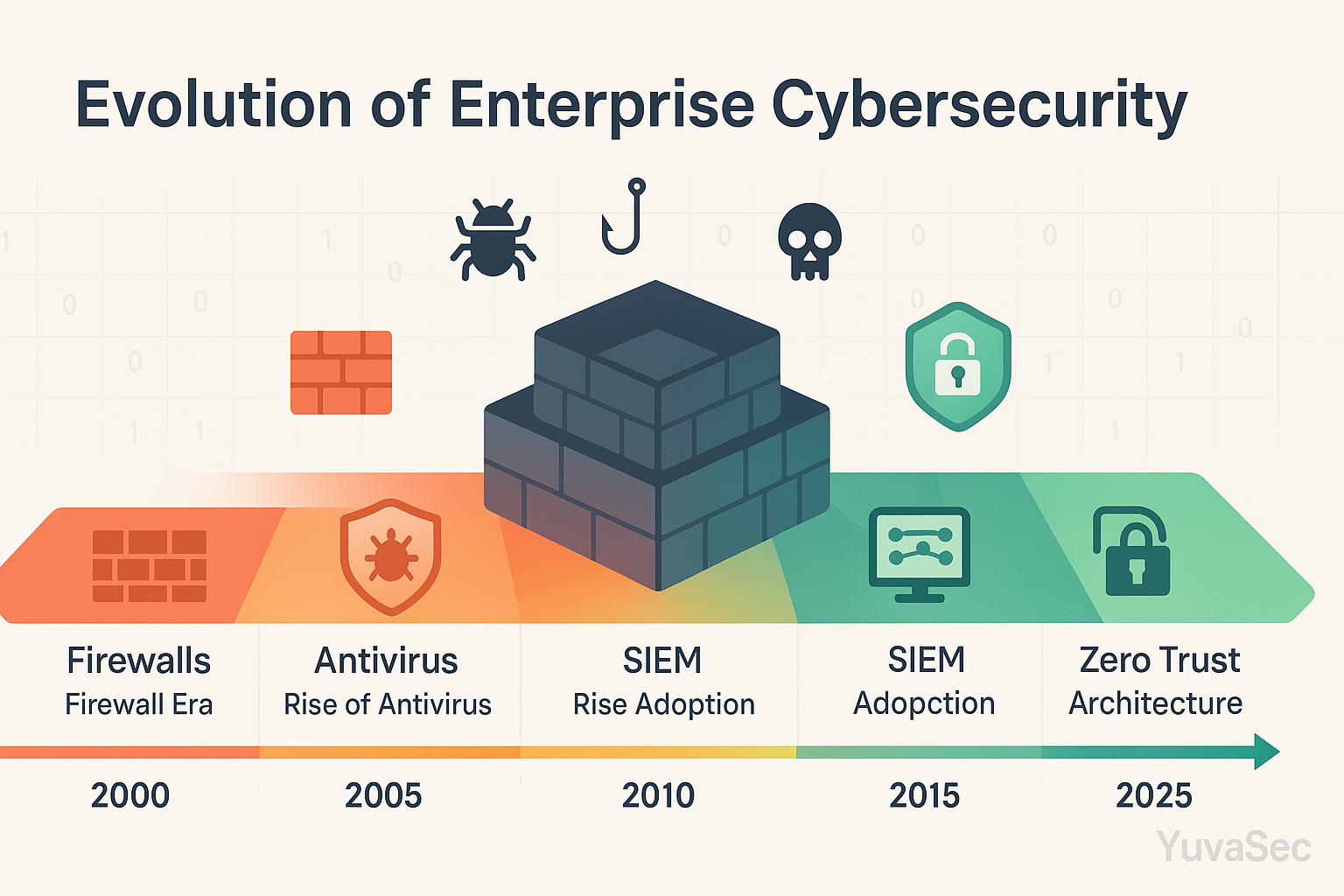“Never Trust, Always Verify” - The Cybersecurity Mantra You Need to Live By
 YuvaSec
YuvaSec
Introduction
Think about a thief walking into your workplace, dressed up like they work there, sailing past security just because they fit the part. Nobody asks questions. Sounds dangerous, doesn’t it? Yet that’s exactly how traditional cybersecurity used to operate assuming anything inside the network couldn’t be a threat.
In today’s world, that assumption can cost companies millions.
Now that we’ve got remote work, cloud computing, bring-your-own-device policies, and constantly evolving cyber threats, cybersecurity’s rules have completely changed. And driving this transformation is one clear, powerful principle: “Never trust, always verify.” I’m going to break down Zero Trust Architecture (ZTA) — not just another fancy business term, but a security approach that everyone from individuals to huge organizations needs to adopt to survive in our digital age.
What Does “Never Trust, Always Verify” Actually Mean?

From Implicit Trust to Explicit Verification
The shift from 'trust what's inside' to 'verify everything' is pretty significant. Old security models basically assumed anyone inside the network was trustworthy. Zero Trust turns this idea upside down. It doesn't matter if you're a user, device, or application—every access request is viewed with skepticism, no matter where it comes from.
What makes this approach different?
There's no automatic trust based on network location or who owns a device.
Authentication and authorization happen continuously, not just once.
Access is granted based on context-specific risk factors like location, device health, and user behavior patterns.
And this doesn't just apply to remote workers—it's for everyone, including internal employees and even devices connected directly to the corporate network (LAN).
Implications for Businesses

From Defense Walls to Micro Trust Zones
The shift to "never trust, always verify" isn't just a slogan for organizations - it means some serious operational changes:
Creating security boundaries around individual workloads so attackers can't easily move sideways
Setting up real-time monitoring with smart tools that can spot when something doesn't look right
Tightening access controls so everyone only gets what they absolutely need - nothing extra
JPMorgan Chase shows how this works in practice. They've adopted Zero Trust principles with micro-segmentation, mandatory multi-factor authentication, and smart monitoring powered by machine learning. The result? They've dramatically reduced how much damage a potential breach could cause."
Implications for Everyday Users
Your Home Isn’t Safe by Default
In a Zero Trust world:
Your smart fridge and laptop aren’t automatically friends
Public Wi-Fi is always suspect
Logging in once is never enough
Practical solutions:
Always enable Multi-Factor Authentication (MFA)
Avoid reusing passwords across services
Use Endpoint Protection tools, even at home
Zero Trust mindset means treating every interaction - email, login, or file download - as a potential threat vector.
Why This Matters Now More Than Ever

Remote and hybrid work have basically wiped out the old network boundaries we used to rely on.
Meanwhile, we're seeing cyber threats that are both more common and more sophisticated than before.
Don't forget that regulations like GDPR and HIPAA aren't letting up on accountability requirements.
And let's face it - as attacks become more automated, a Zero Trust mindset is the only thing that can really keep pace.
Expert Insights
“Zero Trust isn’t just a security model—it’s a mindset shift that prioritizes resilience over convenience.”
– John Kindervag, Creator of Zero Trust Architecture, former VP at Forrester Research“The best breaches are the ones you never notice, because they never happen. Zero Trust helps you prevent the ones you don’t even see coming.”
– Theresa Payton, Former White House CIO, Cybersecurity Expert
These thought leaders emphasize that Zero Trust is less about tools and more about philosophy and process.
Conclusion
To wrap things up, the whole "never trust, always verify" thing isn't paranoia—it's just good sense.
As users, we can't keep assuming our apps and devices are fine just because we're familiar with them. And if you're running a business, you've got to question everything—even stuff that comes from inside your organization.
What should you do now?
Go through your accounts and turn on multi-factor authentication Divide your network into segments (yes, even your home network) Make sure your team gets what Zero Trust really means Don't try to do everything at once—secure your critical stuff first
These days, trust in the cyber world has to be earned—it can't just be given.
Further Reading:
Subscribe to my newsletter
Read articles from YuvaSec directly inside your inbox. Subscribe to the newsletter, and don't miss out.
Written by

YuvaSec
YuvaSec
Cybersecurity Enthusiast | Ex-Mechanical Engineer | Lifelong Learner Pivoting into InfoSec On a mission to build skills, break stuff (ethically), and land a job in cybersecurity.